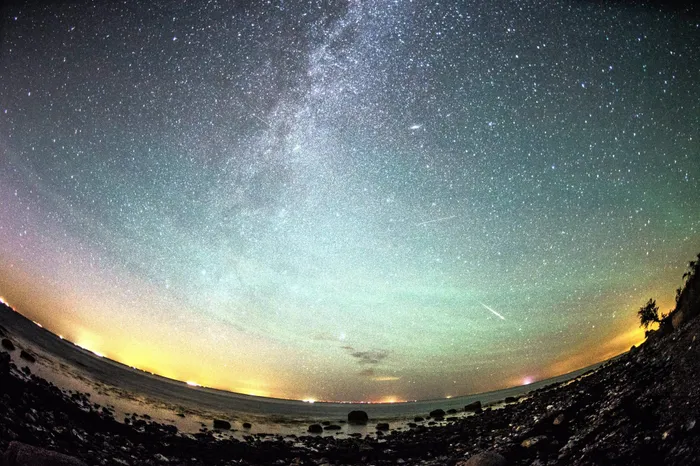Celestial marvel: your guide to experiencing the Perseid meteor shower

Meteors from the Perseid meteor swarm burn up in the atmosphere as our own galaxy, the Milky Way, is seen in the clear night sky over the German island of Fehmarn, Germany, early August 13, 2015. The Perseid meteor shower occurs every year when the Earth passes through debris and dust of the Swift-Tuttle comet.
Image: DANIEL REINHARDT / EPA
On the greater scheme of things, I am more of a sunset person than a sunrise worshipper - forsaking witnessing the breaking of dawn in favour of savouring each setting sun - but not tomorrow or the day after.
That's because on August 12 and 13, just before dawn, the Perseid meteor shower will peak with up to 100 meteors an hour, filling the sky with bright and fast-moving remnants of comet Swift-Tuttle as they burn up in Earth's atmosphere.
The natural fireworks display happens when Earth passes through the trail of dust and debris left by a comet long gone.
According to the Astronomical Society of Southern Africa, "Particles travelling through space are termed meteoroids. If they enter the atmosphere, then the resultant streak of light is termed a meteor.
"Bright meteors are termed fireballs, and if seen to explode, they are called bolides. If the object survives its passage through the atmosphere, reaches the ground and is recovered, then it is termed a meteorite."
These meteorites hold significance for scientists who go out of their way to get their hands on them, as they hold the key to their origin in the universe.

The South African Astronomical Observatory in Sutherland in the Northern Cape is renowned for its clear view of our galaxy, the Milky Way.
Image: SAAO / Facebook
The fast pace of the Perseid shower, coupled with the sheer number of these particles burning up as they enter our atmosphere, makes it the favourite meteor shower of the year.
The Perseids get their name from the constellation Perseus. Known for their fast, bright fireballs and high hourly rates, the Perseids are a favourite for casual stargazers and seasoned skywatchers alike, according to "People".
But there is no escaping that you'll have to set an alarm - there is no fluke skywatching when it comes to Perseid. You have to be prepared.
And you have to be prepared for disappointment, too. That's because of the waning crescent moon that might ruin the show. Then there is the issue of cloud cover, which can obscure your view of the spectacle.
Experts advise ensuring you have a dark sky to begin with. They also suggest giving your eyes 20 minutes to half an hour to get accustomed to the light conditions, making it easier for you to catch a glimpse of a meteor, or what we call "shooting stars".
So, if you're a city dweller, head out of town with a flask of coffee and a blanket to make the occasion memorable.
Also, while you're about it, you may as well feast your eyes on the Venus-Jupiter conjunction that happens just after sunset tonight. They will appear closer together than the width of a full Moon.
Even in light-polluted areas, you'll see the two side-by-side by looking low in the sky about 30 minutes to 45 minutes after sunset.